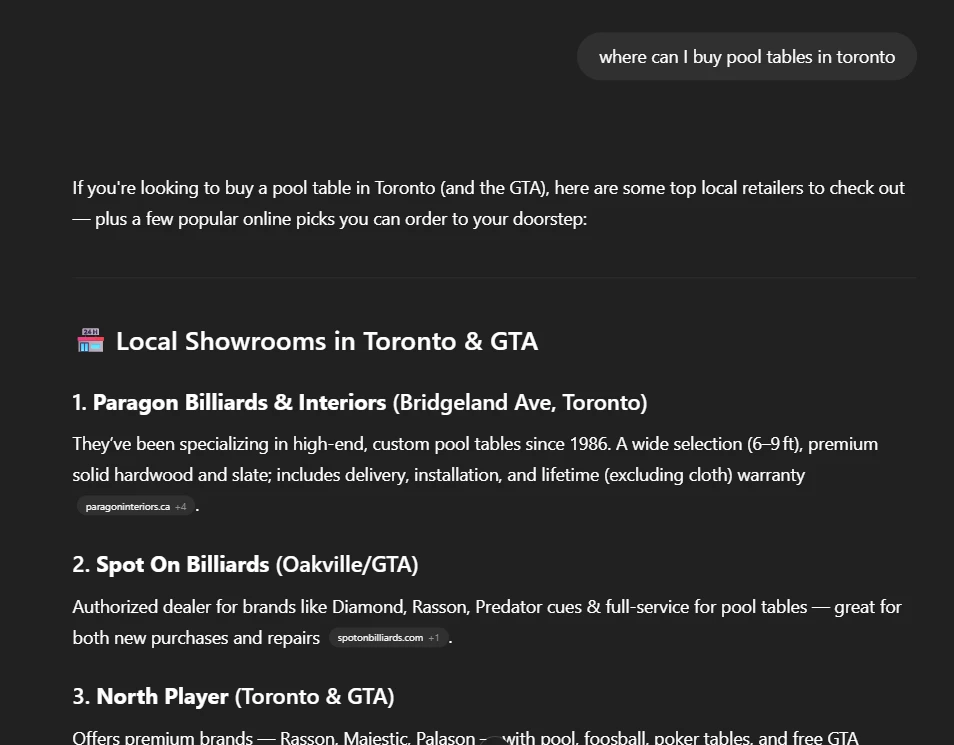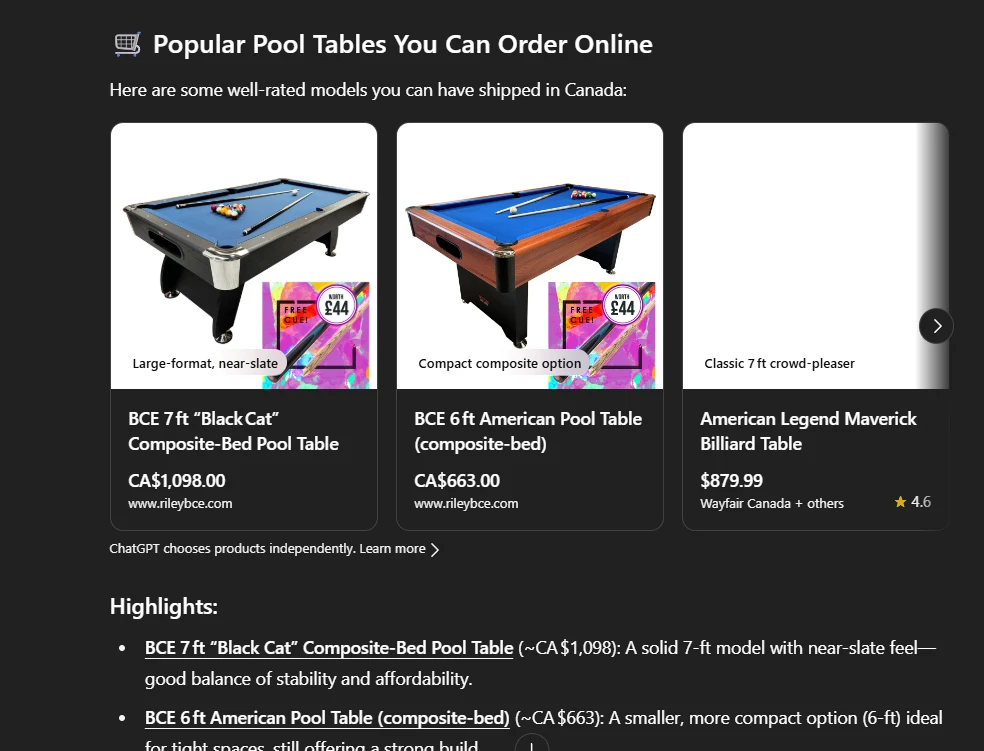How to Implement ChatGPT shopping optimization
As AI reshapes the way people search and shop online, one thing is clear: if your products aren’t being picked up by AI-driven search tools, your online store may be invisible to a growing share of your potential customers.
In April 2025, OpenAI launched a shopping feature inside ChatGPT that displays product recommendations—including images, pricing, availability, and direct links—right inside the chat. Unlike traditional ads, these listings are organic, pulled from publicly available structured data and trusted product sources like Bing Shopping.
So what does this mean for ecommerce businesses? It means your competitors could already be gaining AI-powered visibility while you’re not even in the conversation. If you’re not optimizing now, you’re missing out. AI-driven platforms like ChatGPT are already reshaping the buyer journey and influencing purchasing decisions in real time. It’s no longer just about Google. You need to rethink your visibility strategy to include the AI search experiences your customers are actively using today.
What’s Available Now
ChatGPT’s shopping tool is live and available to all users, including those on Free and Plus plans. When someone asks a product-related question—like “Where can I buy a pool table in Toronto?”—ChatGPT generates a list of product results it believes are relevant.
These results are not paid ads. Instead, they are drawn from:
- Structured product data on ecommerce websites
- Product listings in Bing Shopping


What’s Coming Next
OpenAI is actively developing a merchant product feed submission program, which will allow online retailers to submit their full product catalog directly. Merchants can join the early access list by visiting OpenAI’s interest form.
This will provide more control over how your products appear inside ChatGPT and other AI-driven shopping experiences. But even after feeds go live, structured data on your website will continue to play a key role in AI visibility.
Why This Is a Strategic Priority
If your competitors are showing up in ChatGPT product summaries and you aren’t, they have a major visibility edge. You could have better pricing, faster delivery, or more stock—but if AI doesn’t know that, neither will your buyer.
This is a strategic opportunity to gain early visibility while the channel is still developing. By optimizing now, you put your brand in front of buyers before your competitors even realize the shift is happening.
Key Action Steps for Online Retailers
✅ Submit your product feed to Bing Shopping
(https://about.ads.microsoft.com/en-us/solutions/microsoft-merchant-center)
This increases your odds of appearing in ChatGPT shopping results.
✅ Add structured data (schema markup) to your product pages
Use tools like Google’s Rich Results Test to verify.
✅ Check your product visibility in ChatGPT and Bing Copilot
Ask prompts like: “Where can I buy near [city]?”
✅ Sign up for OpenAI’s product feed early access
Don’t wait—position yourself early.
Bonus: Help AI Understand Your Product Offering
AI doesn’t just read product titles. It interprets context. That means:
- Add FAQ content to your site
- Create how-to blog posts or buyer’s guides
- Write category descriptions that reflect customer intent (e.g., “best cue sticks for beginners”)
This kind of content helps you show up when shoppers ask AI nuanced questions, not just transactional ones.
Want Help Getting Found in AI Search?
Book a 90-minute Digital Marketing Review Workshop.
We’ll review your site, your feeds, and your discoverability in AI-powered shopping—so you’re not left behind.
Ready to check your site?
Wondering if your store is ready to rank in ChatGPT, Bing Copilot, or Google’s AI Overviews? This checklist walks you through everything you need to evaluate—from product feeds to structured data and trust signals.

